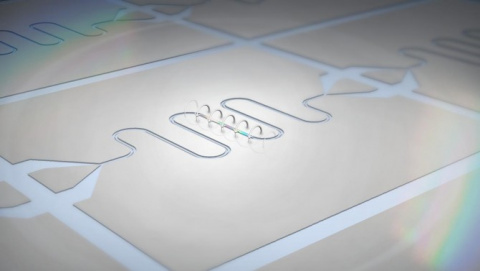Física
Uncovering a new aspect of charge density modulations in high temperature superconductors
Noticia en inglés
Researchers from Chalmers University of Technology and Politecnico di Milano have identified a crucial new aspect of charge density modulations in cuprate high critical temperature superconductors. They have identified a new electron wave which could help reveal some of the mysteries about superconducting materials. The findings are published in the journal Science.
High critical temperature superconductors have a variable charge density, meaning that their electrical charge is unevenly distributed. This partly results from what are known as 'charge density waves', which were discovered a few years ago. But these have only been observed to exist sporadically, under certain conditions. Therefore, they were not believed to be a contributing factor to the materials' superconducting properties.
What the researchers have now discovered, however, is an additional aspect to the variable charge density, which they term "charge density fluctuations". These have been identified as an additional charge modulation, collective and with a shorter correlation length. They are very pervasive, meaning that compared to the conventional charge density waves, they are present at a much greater range of temperatures, up to room temperature and beyond, and at different levels of oxygen doping.
"These charge density fluctuations could be a crucial ingredient of the highly unconventional room temperature properties of high critical temperature superconductors - something which challenges our common understanding of the charge transport in metals," says Riccardo Arpaia, postdoctoral researcher at the Department of Microtechnology and Nanoscience at Chalmers, who carried out the research.
![[Img #56890]](https://noticiasdelaciencia.com/upload/images/09_2019/5914_210676_web.jpg)
Charge density waves are just the tip of the iceberg of the charge modulation phenomenon: charge density fluctuations are much more pervasive, and may be crucial to unlocking the secrets of high temperature superconductors. (Credit: Yen Strandqvist/Chalmers University of Technology)
"One could say the charge density waves, which were already very well known, were just the tip of the iceberg. The charge density fluctuations which we have now identified are like the hidden bulk of the iceberg." says Riccardo Arpaia. "The discoveries were possible thanks to the major developments of synchrotron-based x-ray scattering techniques, and to the quality of the samples we have used."
The samples were fabricated at the Italian National Research Council in Napoli, and in the research group at Chalmers led by Professor Floriana Lombardi.
A further finding of the paper looks at how the charge density fluctuations evolve with the temperature of the material. While the previously-known charge density waves change abruptly as soon as the critical temperature is reached - meaning, dependent on whether the material is in a superconductive state or not, the newly-discovered charge density fluctuations are unaffected by the superconductivity. This indicates that the two characteristics are not 'in competition' with one another. This finding might strengthen the researchers' theory that the charge density fluctuations are the key to explaining the mystery of these materials.
Because superconductors operate at such low temperatures, they require cooling from liquid helium or liquid nitrogen, making them expensive and difficult to use outside of certain commercial applications. But if a superconductor could be made to work closer to room temperature, it could have enormous potential. Therefore, there is a lot of interest in improving our understanding of how this class of superconductors works.
Giacomo Ghiringhelli, Professor of Physics at Politecnico di Milano says about the research: "Since 2012, when charge density waves in cuprates were first observed, their importance had not been disputed - but their role had remained unclear. The newly observed charge density fluctuations appear to be a very general property of these materials, meaning they are likely playing a crucial role in the transport of electric current in cuprates." (Fuente: Chalmers University of Technology)



